List of Key Actors
Humphrey Bogart – Rick Blaine. Was typically cast in gangster movies, mainly as the villain, was described as someone who was ‘tough without a gun’. Before Casablanca, he hadn’t been cast as a romantic lead. Producer Hal B. Wallis put his foot down and said the film and the role of Rick Blaine was made for Bogart. Was the first film in which he played a character who’s shows their emotions as well as their toughness.
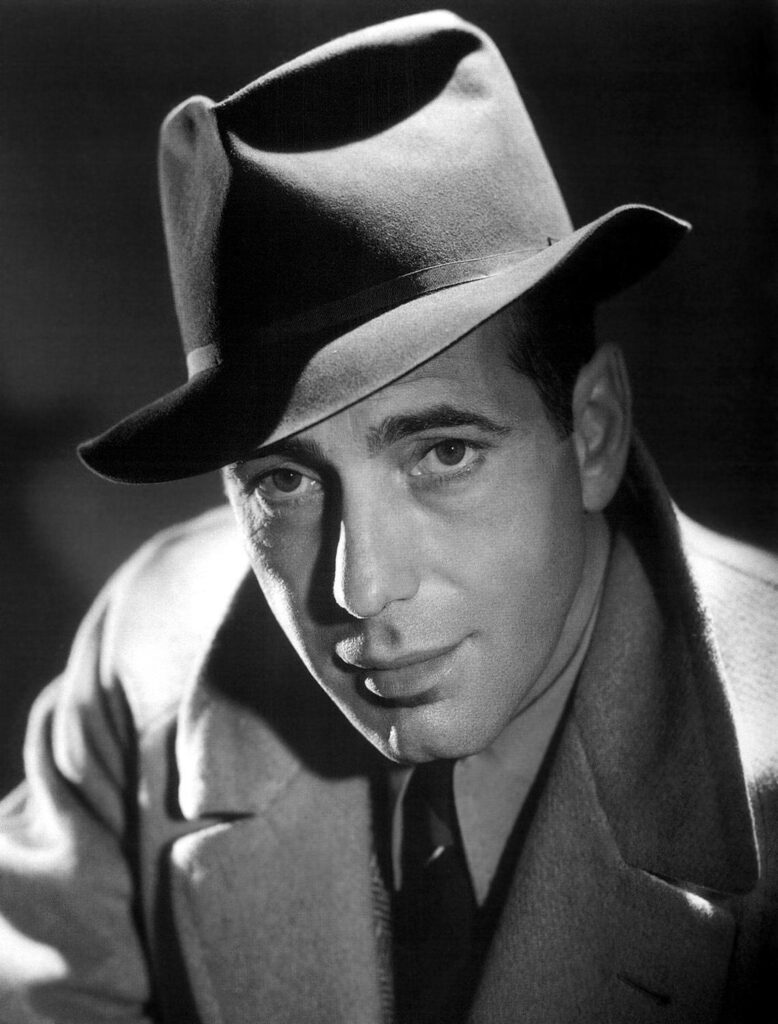
Ingrid Bergman – Ilsa Lund. Hadn’t been in any American films before Casablanca, and wasn’t first choice for the role. Was a fresh face on the Hollywood scene. Was seen as a more exotic person to play the role, due to her beauty and her accent, which was mostly a key decision for casting her, as Americans stereotypically do like foreign accents.
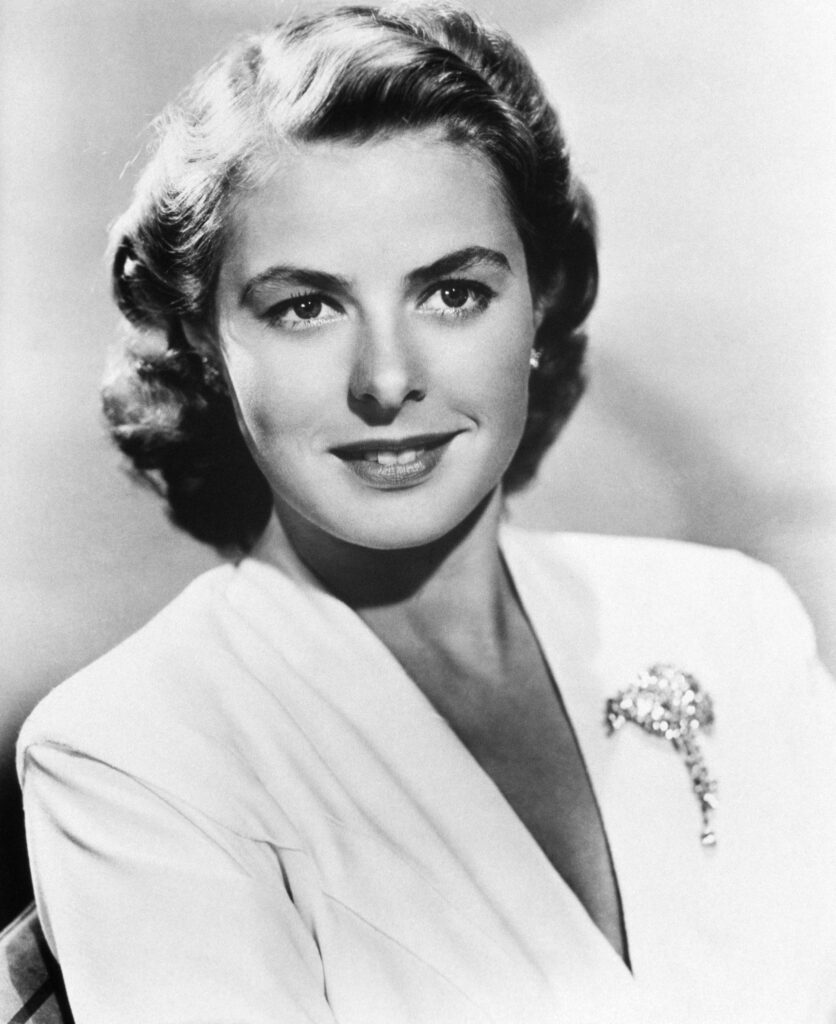
Paul Henreid – Victor Laszlo. Originally born in Treiste, part of the Austro-Hungarian empire at the time, Henreid relocated to America (more specifically New York City) in 1940. His first film for RKO was ‘Joan of Paris’ in 1942 in which he played a Royal Air Force pilot trying to escape occupied France. The film was a big success, and may be the reason why Paul Henreid enjoyed being in war pieces whilst in America. He moved to Warner Bros. in 1942 and his first role with them was as Jeremiah Durrance in the romance ‘Now, Voyager’ and then after that he was cast in probably his most well-known role of Victor Laszlo in ‘Casablanca’. The film was a huge hit and is considered one of the best American films in history.
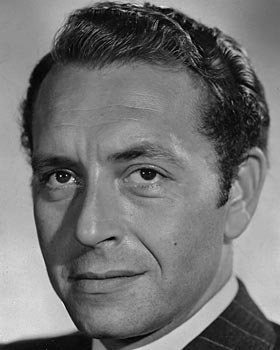
Peter Lorre – Ugarte. Originally born in Hungary, moved to Hollywood in 1935. Originally, was under contract at Columbia Pictures where they struggled to find roles that would fit him. After months of research, Lorre thought Crime and Punishment by Dostoevsky would be a good film in which he could take the main part. Columbia agreed to do it as long as after he went to MGM, as they had lost a lot of money through him not appearing in any of their films. His next film for MGM was ‘Mad Love’, in which he played the role of a demented surgeon, Dr Gogol. He received critical acclaim for his role in this film. After this he went on to do films for 20th Century Fox, the Mr Moto films, a series of Japanese spy films. He then broke his contract with Fox after they promised him the roles of the Hunchback of Notre Dame and Napoleon in films they never shot. He then signed for Warner Bros. and was cast in ‘Maltese Falcon’ and, obviously, ‘Casablanca’.
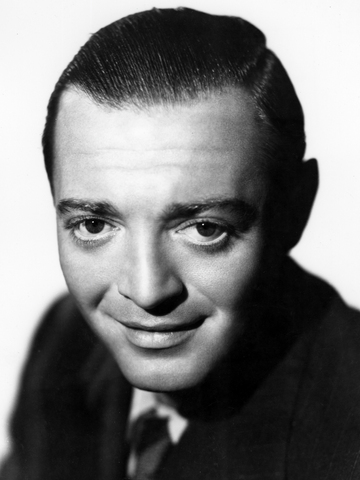
Claude Rains – Captain Louis. Orignally born in London, he came from a lower class background and was said to have a speech impediment. In 1932, his screen test for ‘A Bill of Divorcement’ for RKO was a failure, but it is what led to him landing the title role of James Whale’s ‘The Invisible Man’ in 1933, which was a very well received film. In 1935, he signed a long-term contract with Warner Bros. worth 750,000 dollars over seven years. He played a villainous role of Prince John in ‘The Adventures of Robin Hood’ (1938). His other famous roles feature Dr. Alexander Tower, who commits murder-suicide in order to spare his daughter from a life of insanity in ‘Kings Row’ (1942), and whilst on loan at Universal he featured as the title character in their remake of ‘Phantom of the Opera’ (1943). He featured in a lot of Curtiz’s films, crediting the director with teaching the more understated requirements of film acting, or ‘what not to do in front of a camera’. For Curtiz, he appeared in such films as the previously mentioned ‘The Adventures of Robin Hood’ (1938), ‘Gold is Where You Find It’ (1938) and, obviously ‘Casablanca’ (1942).
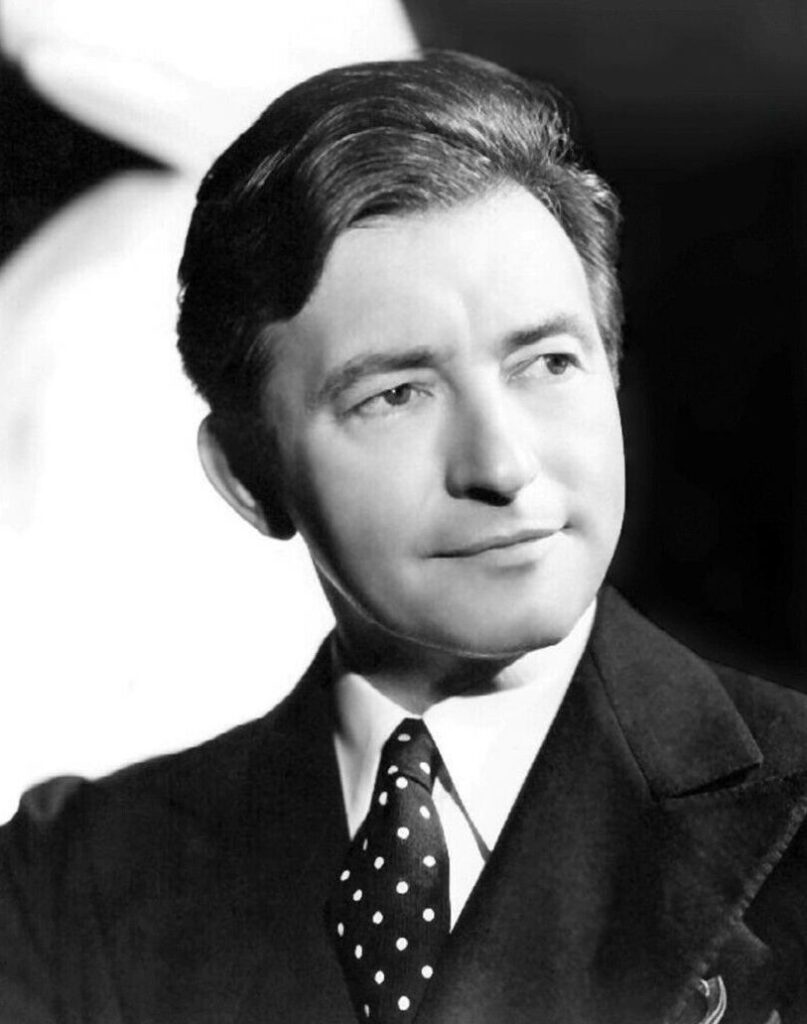
Sydney Greenstreet – Signor Ferrari. Born in Eastry,Kent in 1879 ,he begun his stage career in 1902 in a production of Sherlock Holmes. Over the years he had many acting gigs, such as touring Britain with Ben Greet’s Shakespearean company, and in 1905 made his New York City debut in ‘Everyman’, but refused appear in films until he was 61, when he then began working for Warner Bros., with his debut role being Kasper Gutman co-starring alongside Humphrey Bogart in ‘The Maltese Falcon’. He then played the crooked club owner Signor Ferrari in ‘Casablanca’, where he earned a salary of 3,750$ a week for seven weeks’ work. He is also known for appearing in ‘Backgroud to Danger’ (1943) with George Raft and reuniting with fellow ‘Casablanca’ co-stars, Humphrey Bogart, Peter Lorre and Claude Rains in ‘The Mask of Dimitros’ (1944).
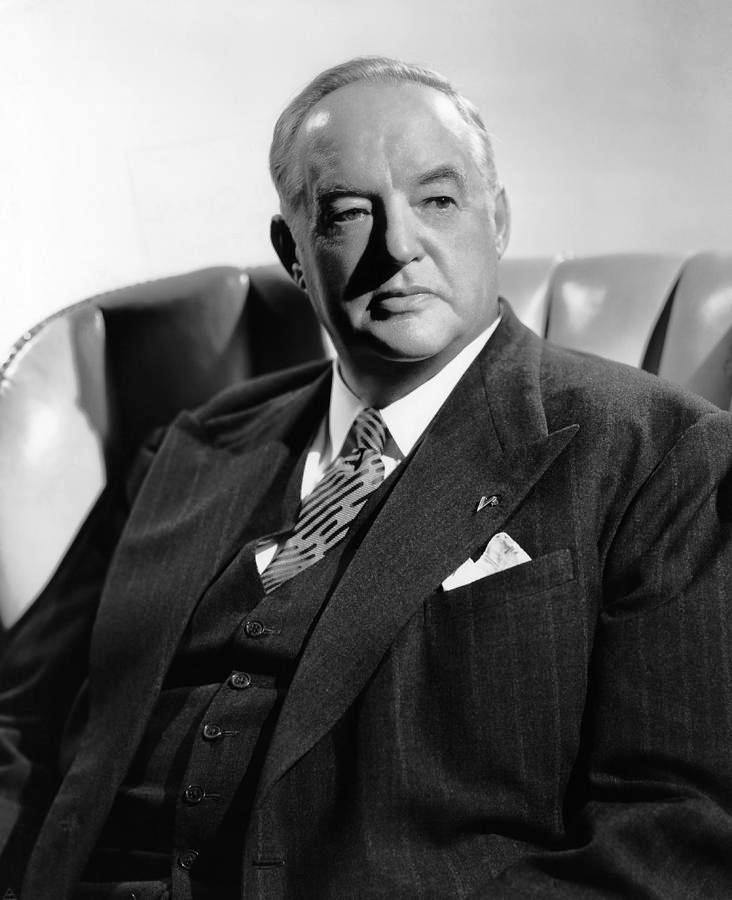
Madeleine Lebeau – Yvonne. Lebeau married actor Marcel Dalio in 1939; it was his second marriage. They had met while performing a play together. She had already appeared in her first film, an uncredited role as a student in the melodrama Young Girls in Trouble (1939). In June 1940, Lebeau and Dalio, who was Jewish, fled Paris ahead of the invading German Army and reached Lisbon. They are presumed to have received transit visas from Aristides de Sousa Mendes, allowing them to enter Spain and journey on to Portugal. It took them two months to obtain visas to Chile. However, the Chilean passports they had acquired turned out to be fakes, leaving them and 200 others stranded upon the S. S. Quanza. Eventually, they acquired Canadian passports and entered the United States, where Lebeau made he Hollywood debut in ‘Hold Back the Dawn’ (1941). Later that year, she was cast in the role of Yvonne in ‘Casablanca’, where Warner Bros. signed to a $100-a-week contract for twenty-six weeks to be in a number of films. On 22 June, while she was filming her scenes in ‘Casablanca’, her husband, Marcel Dalio, who played Emil the croupier in the same film, filed for divorce in Los Angeles on the ground of desertion. They divorced in 1942. Shortly before the release of the film, Warner Bros. terminated her contract.
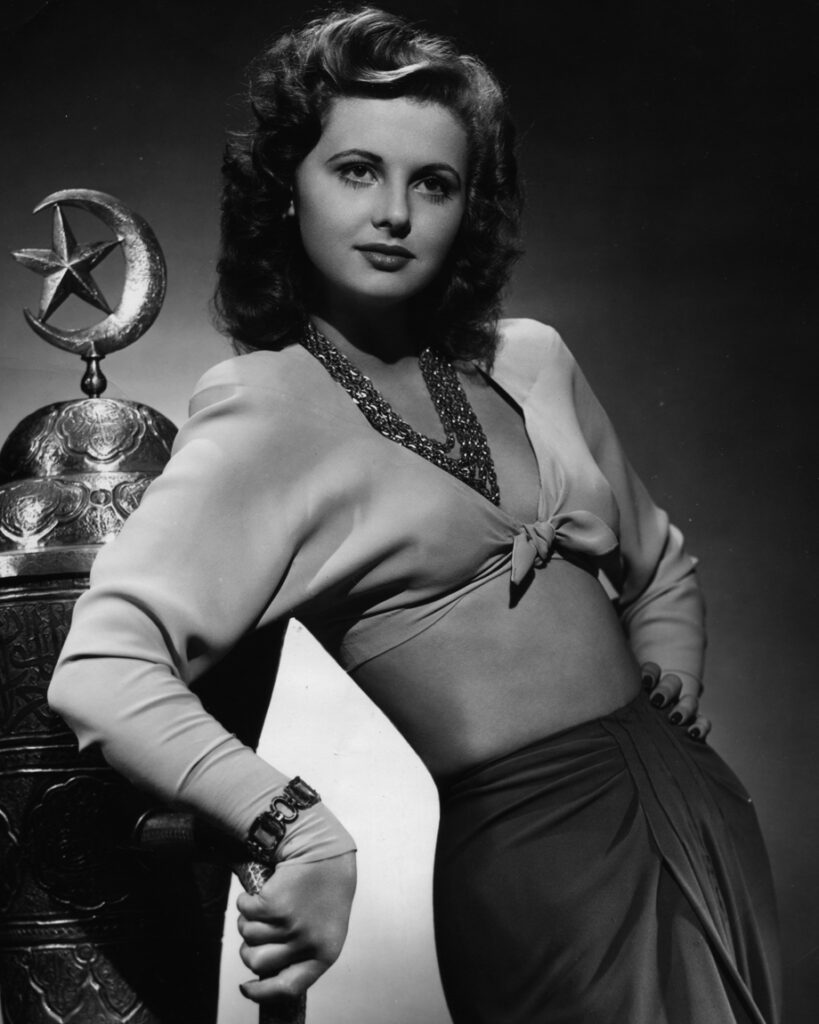
Joy Page – Annina Brandel. Page was the daughter of Mexican-American silent film star Don Alvarado and Ann Boyar, the daughter of Russian Jewish immigrants. Her parents divorced when she was eight and in 1936 her mother married Jack L. Warner, then head of Warner Bros. studios. Warner did not encourage his stepdaughter’s interest in acting. Page, who initially thought the script to ‘Casablanca’ was “old fashioned” and “clichéd”, landed the role of Annina Brandel on her own and Warner reluctantly approved. She was only seventeen and fresh out of high school. Page, along with Dooley Wilson and Humphrey Bogart, were the only American-born feature actors in the film. Warner, however, refused to sign Page to a contract, and she never appeared in another Warner Bros. film. She went on to act in a number of films for other studios, including a featured role in her next film, Kismet in 1944.
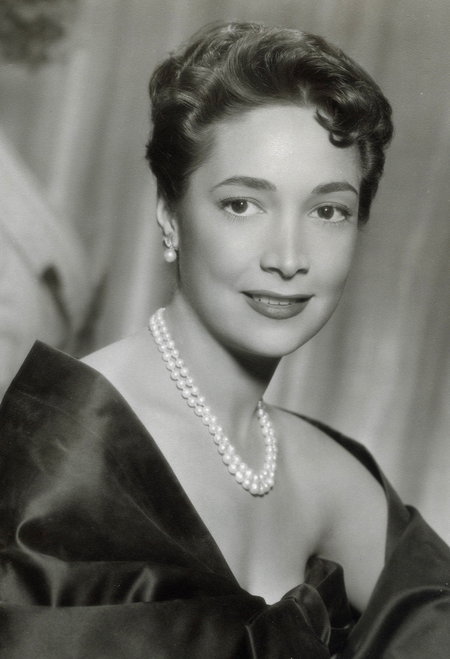
Dooley Wilson – Sam. Arthur ‘Dooley’ Wilson was born in Tyler, Texas and at the age of seven, the same year his father died, he began to earn a living by performing in churches. By 1908, he was in Chicago in the repertory company of the Perkin Theatre, the first legitimate black theatre in the United States. He had earned the nickname ‘Dooley’ due to his performance of a song called, ‘Mr. Dooley’, in which he used whiteface. His breakthrough role came in 1940, with his portrayal of Little Joe in the Broadway musical Cabin in the Sky. This won him a contract with Paramount Pictures in Hollywood. He found himself playing Pullman porters while his stage role in the MGM film adaptation of Cabin in the Sky was played by Eddie “Rochester” Anderson. In May 1942, Warner Bros. were casting for their upcoming film ‘Casablanca’, and borrowed Sam from Paramount for seven weeks at $500 a week.
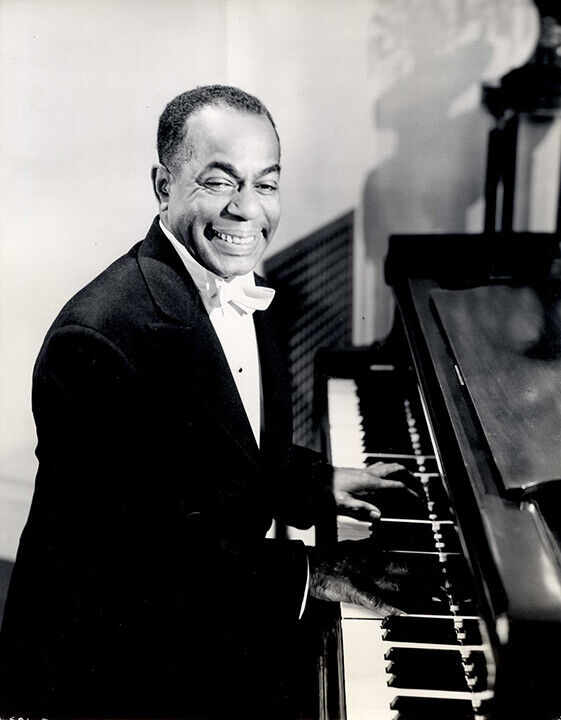
Conrad Veidt – Major Heinrich. Veidt was an actor who was most known for his roles in horror films, more specifically German Expressionist horror films, such as ‘The Cabinet of Dr. Calgari’ (1920). His starring role in ‘The Man Who Laughs’ (1928), as a disfigured young outcast servant whose face is cut into a permanent grin, provided the visual inspiration for the iconic Batman villain the Joker. Veidt starred in other silent horror films such as The Hands of Orlac (1924), also directed by Robert Wiene, The Student of Prague (1926) and Waxworks (1924), in which he played Ivan the Terrible. Veidt also appeared in Magnus Hirschfeld’s film Anders als die Andern (Different from the Others, 1919), one of the earliest films to sympathetically portray homosexuality, although the characters in it do not end up happily.He had a leading role in Germany’s first talking picture, Das Land ohne Frauen (Land Without Women, 1929). Veidt opposed the Nazi regime and when asked what his race was he declared ‘Jew’, even though he wasn’t a Jew but rather his wife was and he was saying it in solidarity with her.n By 1941, Veidt and his wife, Ilona, had settled in Hollywood to assist the British effort in making American films that might persuade the then-neutral and still isolationist United States to join the war against the Nazis. He starred in a few films, such as ‘A Woman’s Face’ (1941), and his most known is in this film of ‘Casablanca’, in which he plays General Strasser. Veidt noted it was an ironical twist of fate as he was praised for, in his words, ‘portraying the character who forced him to leave his homeland’.
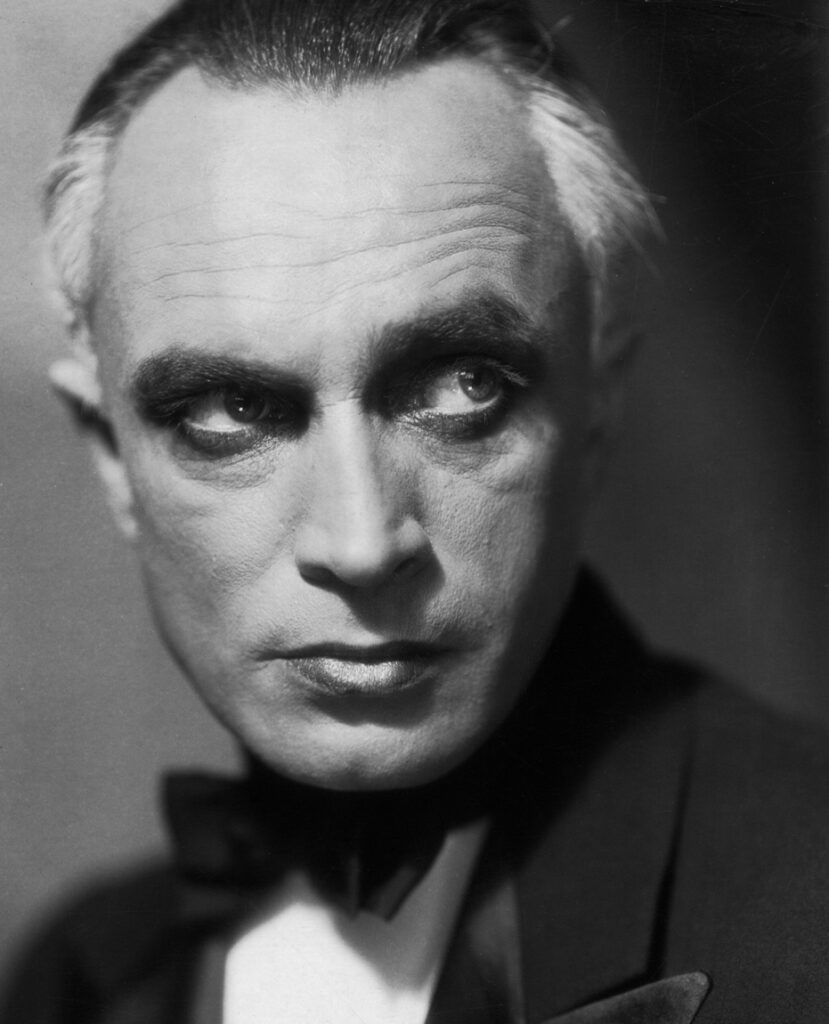
John Qualen – Berger. Was an American character actor of Norwegian heritage who specialised in Scandinavian roles. Starting out as cookware salesman, Qualen made enough money to begin his acting career, in which he had his big break in Elmer Rice’s play ‘Street Scene’.His movie career began when he re-created the role two years later in the film adaptation of the stage production. That screen performance was followed by his appearance in John Ford’s Arrowsmith (1931), which began a more than 35-year membership in the director’s “stock company”, with supporting roles in The Searchers (1956), Two Rode Together (1961), The Man Who Shot Liberty Valance (1962) and Cheyenne Autumn (1964).Appearing in well over one hundred films, and acting on television into the 1970s, Qualen performed many of his roles with various accents, usually Scandinavian, often intended for comic effect. Qualen assumed a Midwestern dialect as Muley, who recounts the destruction of his farm by the bank in Ford’s The Grapes of Wrath (1940), in a performance so powerful it reportedly reduced director Ford to tears; and as the confused killer Earl Williams in Howard Hawks’ classic comedy His Girl Friday (1940). As Berger, the jewelry-selling Norwegian resistance member in Michael Curtiz’ Casablanca (1942), he used a light Scandinavian accent, but put on a thicker Mediterranean accent as the homeward-bound fisherman Locota in William Wellman’s The High and the Mighty (1954).
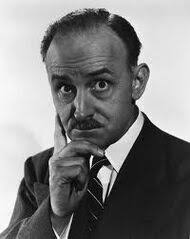
S.Z Sakall – Carl. Born as Gero Jeno in Budapest to a Jewsh family, he turned to acting at the age of 18 due to not having the nicest life in Hungary and in 1946 he became an American citizen under the name of Jacob Gero. Sakall began a Hollywood career that included “an endless succession of excitable theatrical impresarios, lovable European uncles and befuddled shopkeepers”. His first American film role was in the comedy It’s a Date (1940) with Deanna Durbin. The first big hit of his American career was Ball of Fire (1941) with Gary Cooper and Barbara Stanwyck. Later, he signed a contract with Warner Bros., where he had a number of other small roles, including one in Yankee Doodle Dandy (1942) with James Cagney. Later the same year, at the age of 59, he portrayed his best remembered character, Carl the head waiter in Casablanca (1942). Producer Hal B. Wallis signed Sakall for the role three weeks after filming had begun. When he was first offered the part, Sakall hated it and turned it down. Sakall finally agreed to take the role provided they gave him four weeks of work. The two sides eventually agreed on three weeks. He received $1,750 per week for a total of $5,250. He actually had more screen time than either Peter Lorre or Sydney Greenstreet.
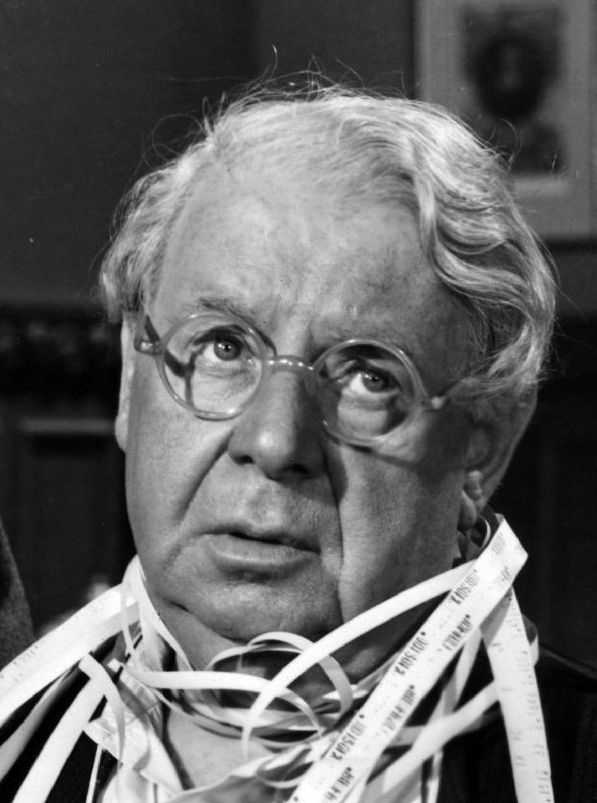
Director – Michael Curtiz. Makes a 173 films for Warner Bros. and makes a huge range of films. Has knowledge of leaving Europe, as he was a refugee from Hungary. Chose immigrants to act as the extras in the film, adding to the authenticity of the film. Over 34 nationaliys are represented in ‘Casablanca’. In teh scene where the people in the bar are singing the national anthem is made more authentic, due to the extra’s empathy. Broke away from the norm of Hollywood camera movement. Renowned for his use of dolly and making it moving around the characters, as they move around. Good example being the scene in which Rick flashes back to hid time with Ilsa in Paris.
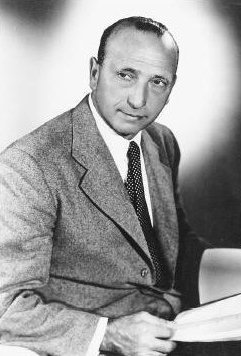
Producer – Hal B. Wallis
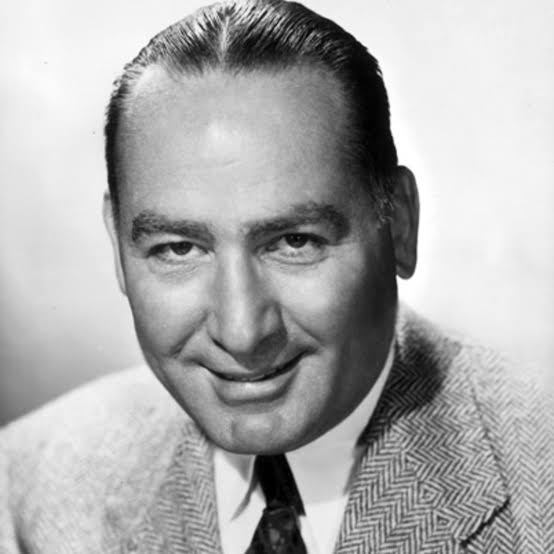
Mise-en-scene in Casablanca
Locations/Settings
One good example of mise-en-scene in terms of location in ‘Casablanca’ is the setting of the actual city itself. The use of the light shining through the overhead grating, a typical technique of Film Noir, creates the imagery of prison bars for the audience, and conveys to them that most of these characters, unlike the main protagonists, will not get off of Casablanca and they will most likely be trapped here for years. Also, elements of the city itself, the bustling market stalls, the groups of foreign people, the dirt paths, help create this image of a so-called tropical paradise for the viewers, even though they will eventually learn that it is far from that and it is a place that people would rather leave than stay.
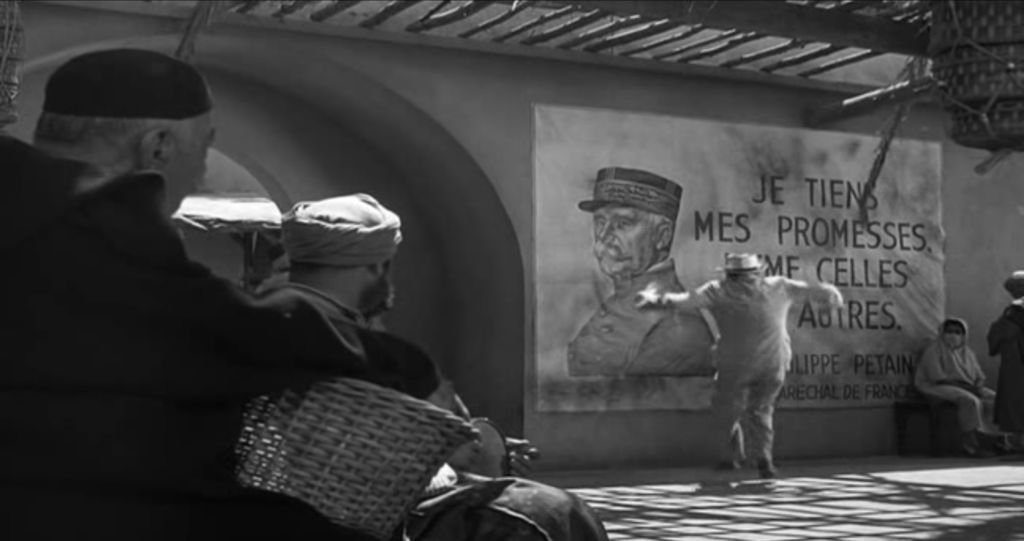
Another good example of mise-en-scene in terms of location is Rick’s bar, as a lot of the features of it, the lamps on the tables with the frilly bits on them, the exotic plants, the luxurious décor, all add to this idea that Casablanca is this tropical paradise that these people are willingly staying on, even though the audience knows that for most of the characters that is not true. It also conveys the Germans grip and jurisdiction on Casablanca become more present, as the exotic plants cast shadows onto the walls, which appear to look like fingers. The setting also is basis for ,in my opinion, the best scene in the film, where the Germans and the French refugees have a sing off with their respective national anthems, showing to the audience that the inhabitants of Casablanca will allow this place to also come under German rule.
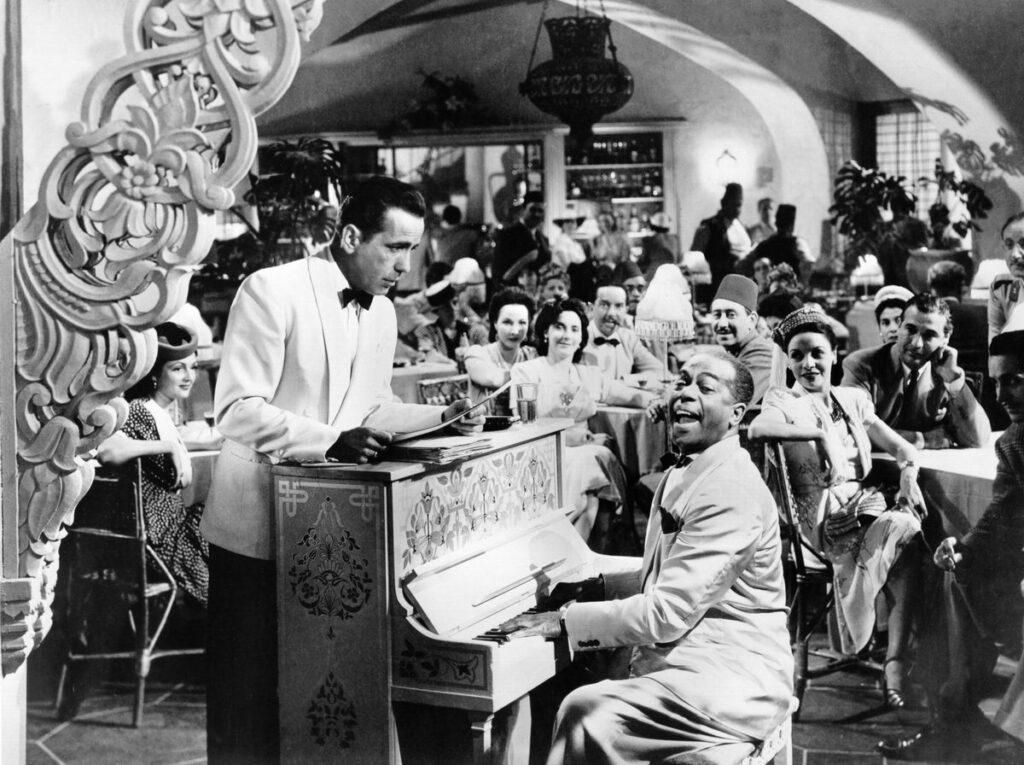
Costumes
A good example of mise-en-scene in terms of costumes in Casablanca is Rick’s white suit, as it, once again, adds to this image of a exotic country. However, it also tells the audience information about the character of Rick, as the suit is quite expensive, so it tells the audience that Rick is a prosperous businessman and that his bar is thriving in Casablanca, even before it is even explicitly stated in the film. Also, the colour of white is associated with good so it visually places him on the side of good for the viewer, and also somewhat foreshadows that, as the film progresses, he will become a more morally ‘good’ character and will ‘join the fight’, as Laszlo says in the famous final scene.
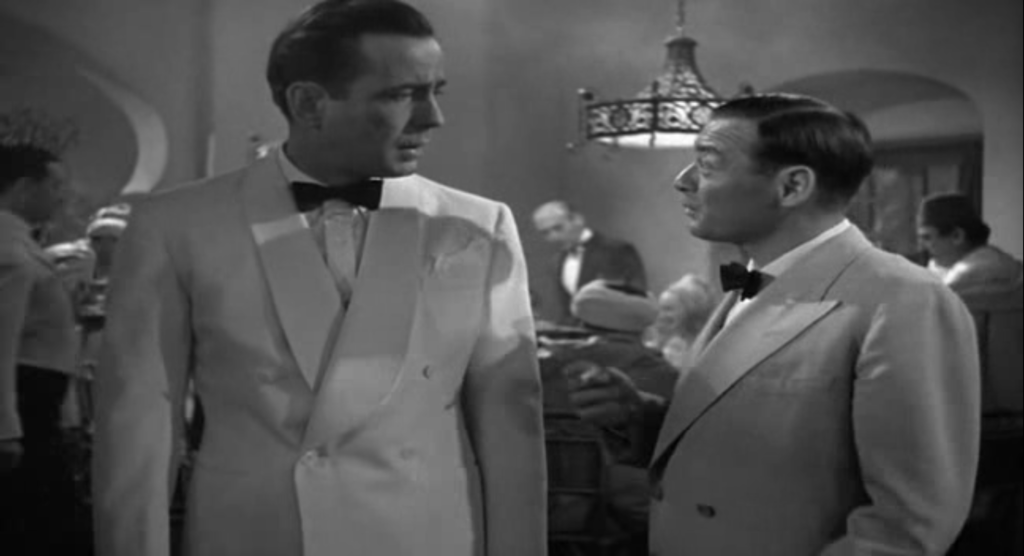
Another good example of mise-en-scene in terms of costume is Ingrid Bergman’s character Ilsa Lund’s wardrobe throughout the film, which was done by costume designer, Orry-Kelly, an innovative and prolific costume designer in the world of Hollywood and although he didn’t win an academy award for his costumes in Casablanca, he did for three other films. The clothing worn by Ilsa Lund, simple day dresses and fitted suits, accessorized with hats, gloves, and brooches, gives the viewer and insight into the clothing of the 1940s, which was practical and utility-inspired, and adds to the realism of the film.
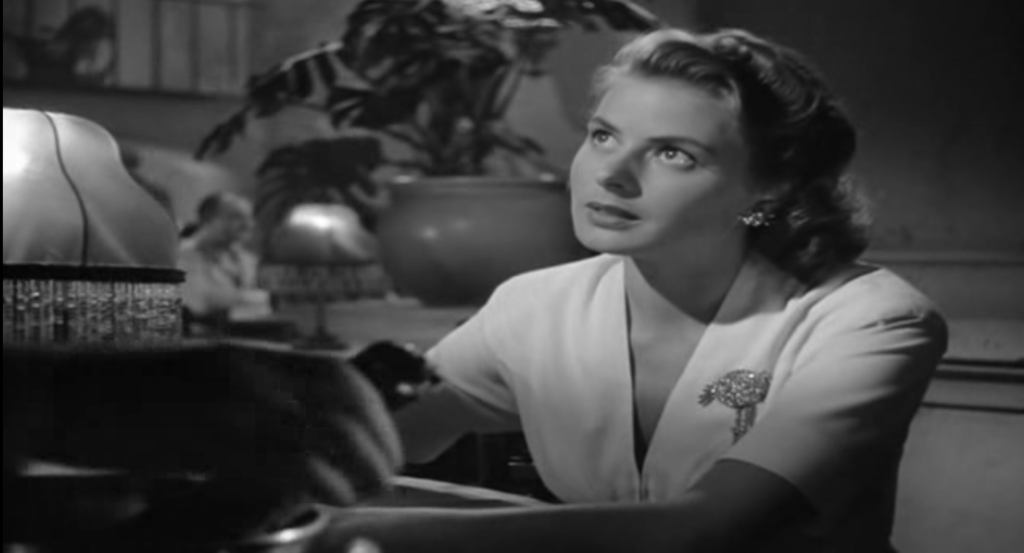
Props
A good example of a prop in terms of mise-en-scene in Casablanca is the ‘Letters of Transit’, who are provided to Rick by Peter Lorre’s character Ugarte. Throughout the film, they represent this theme of escapism from this ‘prison’ of Casablanca, which the vast majority of these characters seek throughout the film. It is also key for the plot, as it moves forward the event of Victor Laszlo and Ilsa Lund trying to escape from Casablanca.
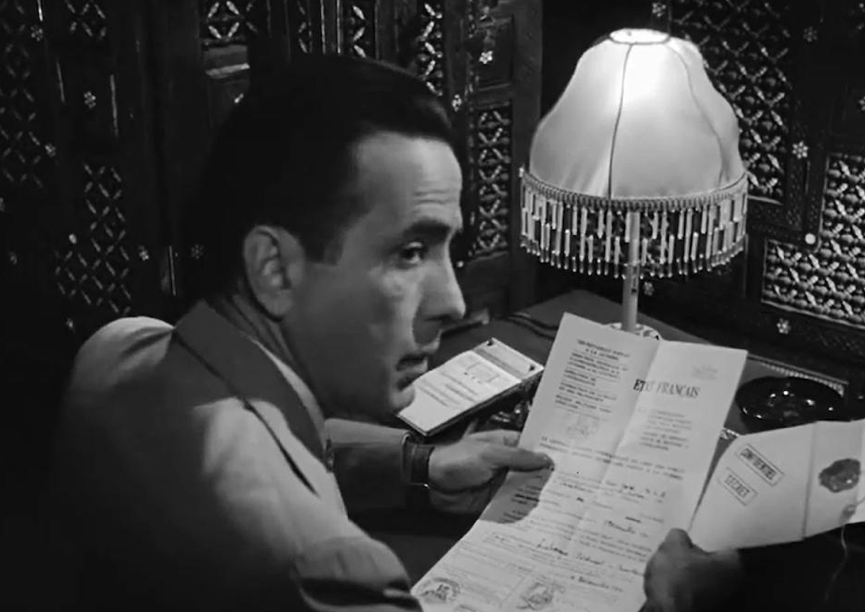
Another good example of props in terms of mise-en-scene in Casablanca are the props within Rick’s cafe, such as the wicker chairs, the lamps with the frilly skirts round the outside, the exotic plants, as they, once again, add to this image that’s being painted in the mind of the viewer which is that Casablanca is a tropical paradise that the characters do not want to leave, even though they will learn soon that is not true. It also reinforces the idea that Rick’s bar is a form of escapism for these characters, especially those that have come America, as it has that kind of Las Vegas aesthetic.

Editing in Casablanca
Casablanca uses ‘invisible editing’, which is where the film’s editing does not bring any attention to itself, a key stylistic choice of most Hollywood films, as it adds to the immersiveness and versimilitude of it, whilst allowing the audience to feel more attached to the characters and, especially in this film, you feel like at some points you are witnessing the events through the eyes of the characters.
A sequence in the film that uses great editing is the sequence in which Rick helps out a couple trying to leave Casablanca by rigging the roulette wheel for them. The sequence cleverly builds tension by cutting between shots of Rick telling the young man where to bet his money, to the close-ups of the young man’s hands pushing towards the spot that Rick has told him, and to the close-ups of the roulette wheel landing on the number Rick has predicted. It also does close-ups of the spectator’s faces, showing the emotion’s they are experiencing, such as the wife’s mirth and the captain’s befuddlement. This builds tension and great excitement for the audience, as they most likely feel that something is going to happen to Rick due to his rigging of the roulette wheel. This is also the first time in the film that the audience sees Rick as this person that can care for others, rather than someone that just cares for himself.
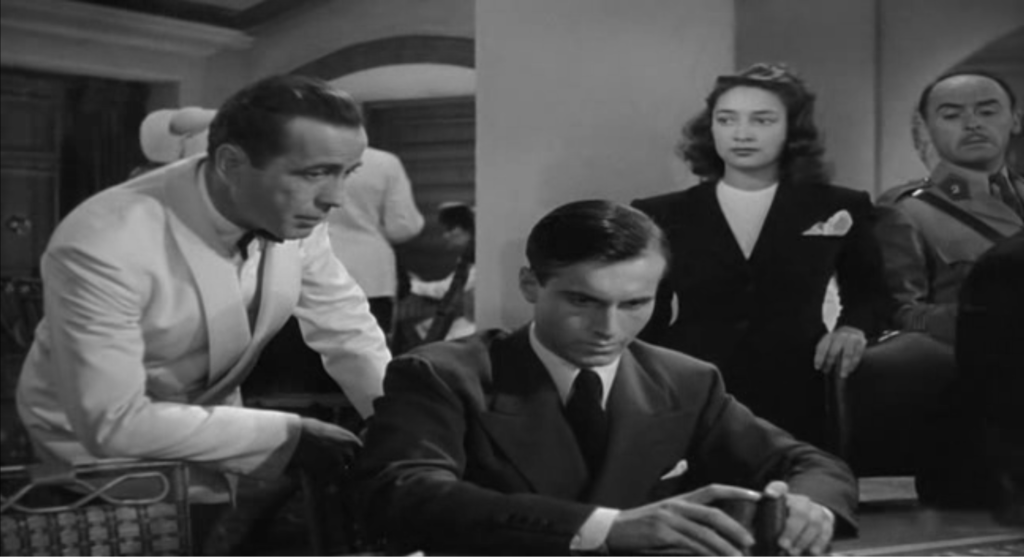
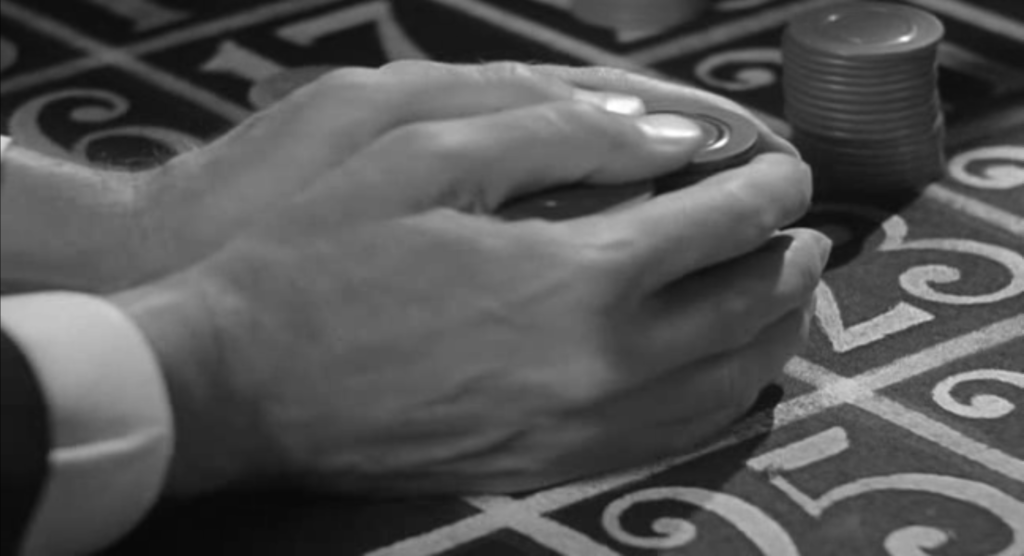
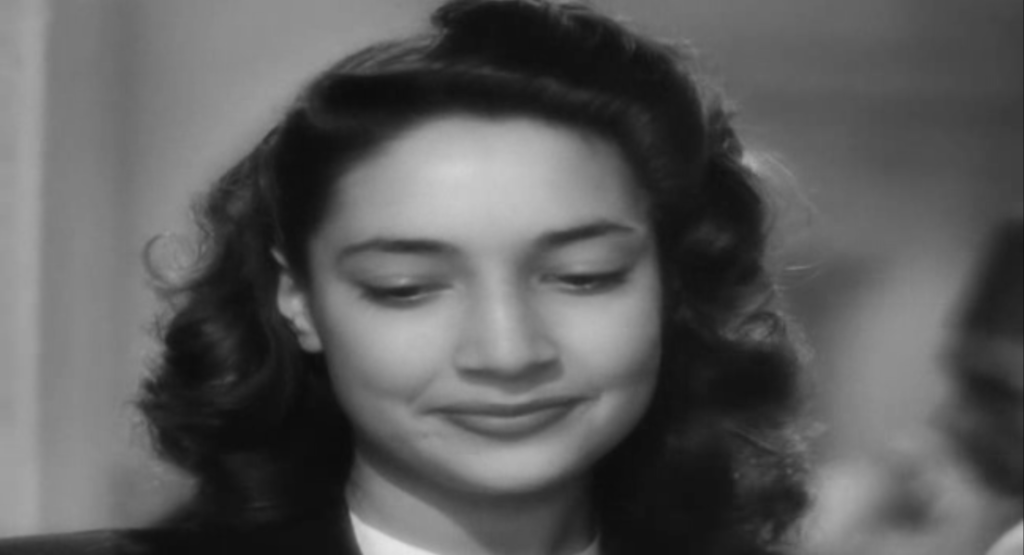
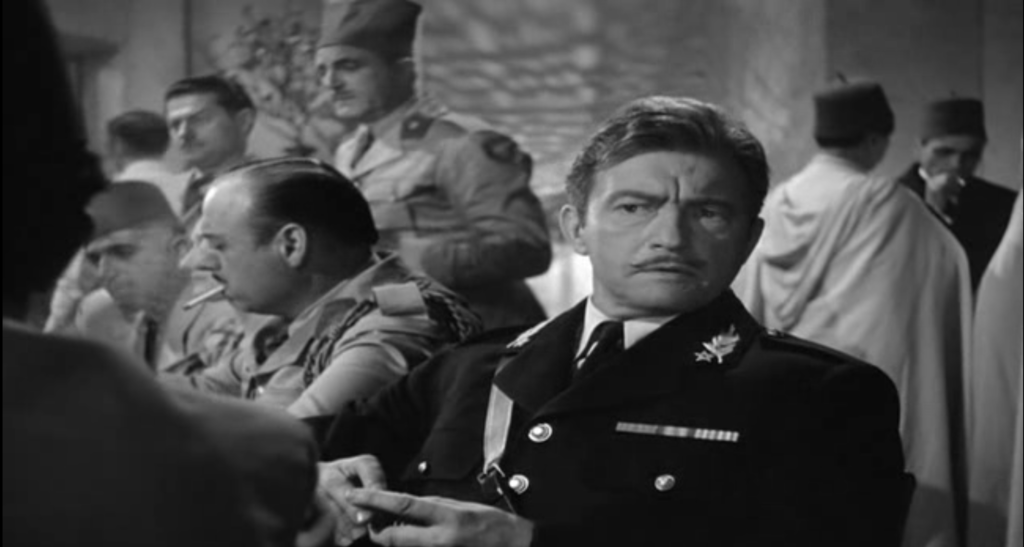
Sound in Casablanca
Dialogue
The dialogue in Casablanca is extremely iconic, with a plethora of iconic lines, such as, ‘here’s to looking at you kid’, which Rick says to Ilsa throughout, specifically in the final scene, showing he still loves her and ‘you know, I think this gonna be the start of a beautiful freindship’, which is said by Rick to Captain Louis at the end of the film, about the topic of what they are to do now they’ve killed the German general. As well as it being iconic, it is also extremely funny and full of wit, an example being when Captain Louis says, ‘I am shocked to find out there is gambling going on in here’, after which he is then told, ‘Here are your winnings sir’, to which he replies with a ‘Thank you’, which I just find incredibly funny. And finally the dialogue, at times, is extremely heart-wrenching, especially Rick’s monologue to Ilsa in the final scene, in which he says ‘We’ll always have Paris’, which is extremely emotional, as they will probably never see each other again.
Soundtrack/Score
The soundtrack of Casablanca, which was composed by renowned film composer Max Steiner, who is known for his work on such films as ‘Citizen Kane’, ‘Maltese Falcon’ and ‘Gone With The Wind’, plays a huge role in the emotional impact that the film is trying to have upon the audience. A key example of this is the film’s iconic track, that Max Steiner didn’t actually compose and didn’t even want in the film, that being ‘As Time Goes By’, which was originally written by Herman Hupfed. It is heard numerous times throughout the film, thus making it a musical motif, representative of Rick and Ilsa’s time in Paris, and the love that they once shared. Max Steiner cleverly wrote into the score of other scenes to portray the feelings that Ilsa and Rick are showing towards one another. For example in the scene where Rick and Ilsa see each other again for the first time the theme is much darker, as it represents the drunken hate that I think Rick feels towards Ilsa at this time. When we get to the final scene the motif returns, but this time much more heart wrenching and emotional played on some very legato strings, to show that the two of them have realized that even though they have to leave one another, they do still love each other.
Aesthetics in Casablanca
Realism
The main way in which Realism is made for the viewer and audience is through the Classical Hollywood technique of ‘invisible editing’, which means that the editing is done so cleverly that the audience will not notice that it is there. The adds to the realism of the film, as it makes the audience feel like they are witnessing something that it is happening in real time before them and not something that is artificial and planned. Another element of the film that adds to its realism is the set design in the film, as the sets are so well designed that they feel like they are these real places in this portrayed tropical paradise.
Visual Style (Film Noir)
The obvious element of the film that adds to it’s film noir aesthetic is that is shot in black and white, as most films of that genre are shot in, but another element that adds to the films Film Noir aesthetic is its use of shadows and light, and having lights pass through blinds and shutters, which can be seen multiple times throughout the film. The use of this technique of using lighting and shadows usually is connoted with evil, such as the fake plants in Rick’s cafe, which look like protruding fingers or bars, portraying the imagery of the German/French powers keeping these people on Casablanca. The example of this that springs to mind for me is when the characters of Victor Laszlo and Carl are hiding from the German/French police of Casablanca, after they were found at this ‘secret meeting’, which is implied to be a meeting of the French Resistance, a French freedom fighters group that fought for the Allies during WWII.
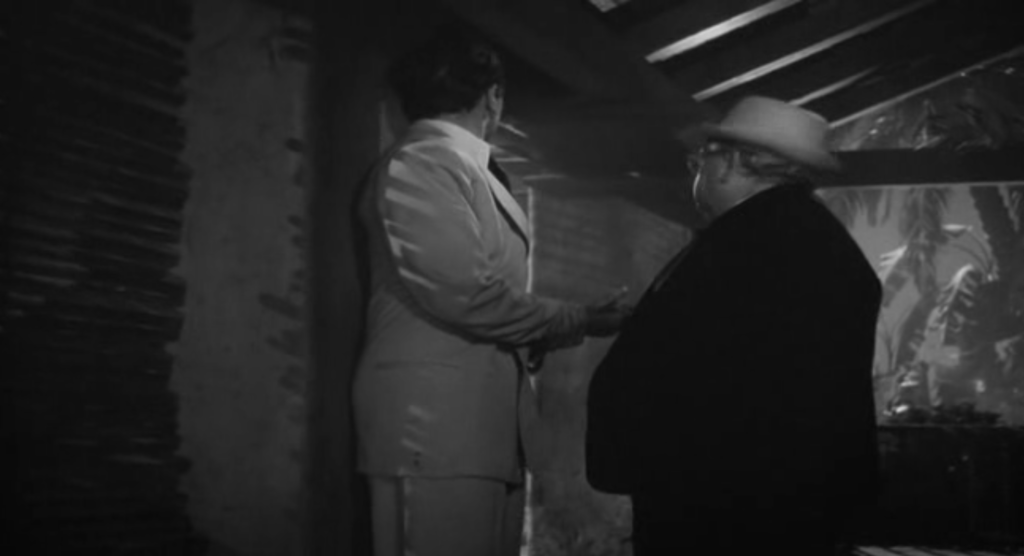
Themes and Issues
Isolationism – what was America’s view on WWII and how can that been seen through the character of Rick ?
Isolationism – a policy of remaining apart from the affairs or interests of other groups, especially the political affairs of other countries
Rick turns from a cynic only caring about himself and his bar to being a more sentimental person, who actually cares about his actions affect others.
If Rick does represent America in ‘Casablanca’, then him only helping out the characters once his bar is closed down could perhaps be the director drawing parallels to America getting involved in the war only when one of their harbours is attacked.
At the start of WWII, 96% of Americans wished to stay neutral in what they thought was a ‘phony war in Europe’.
Representations in Casablanca
Women
In Casablanca, women are portrayed, as people who are manipulated by men, emotionally and physically, usually by the main protagonist of Rick, which adds to his character of someone who only cares for himself. The main examples of this within the film are Ilsa Lund, the main female protagonist who needs Rick for the ‘In Casablanca, women are portrayed, quite stereotypically, as always relying on a man within the film, usually the main protagonist of Rick. The main examples of this within the film are Ilsa Lund, the main female protagonist who needs Rick for the ‘Letters of Transit’, so that herself and her husband, Victor Laszlo can escape Casablanca. There is Yvonne, a drunk who clearly wishes to pursue a relationship with Rick, which he quickly rejects and there is the character of Anina Brandel, whos been manipulated by Captain Renault, but is then actually helped by Rick, which is the first time within the film that we see Rick as someone that cares about other people, not just himself.
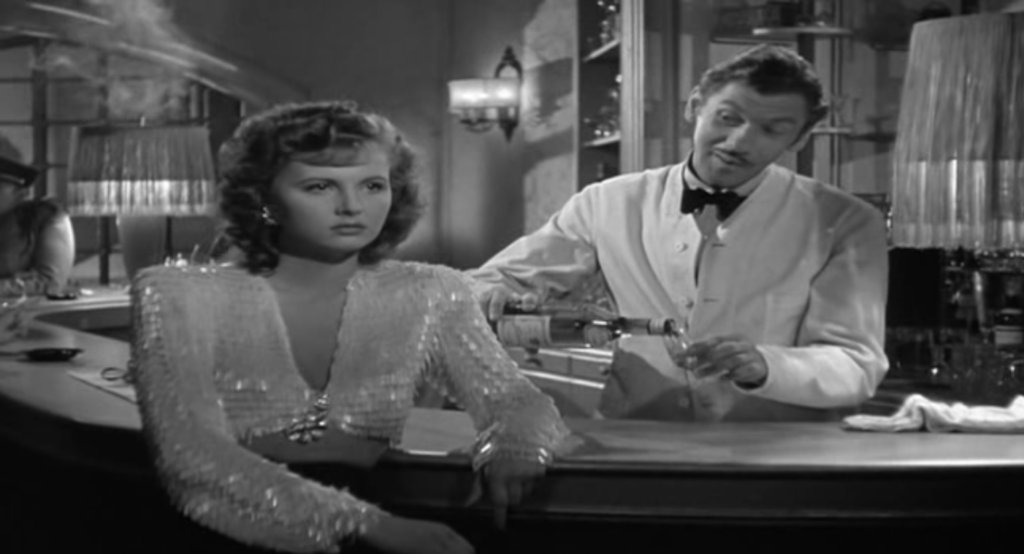
Men
A lot of the men within Casablanca are presented as the stereotypical strong man, such as Rick and General Strausser. The staff of Rick’s bar are presented as very nice and caring people, shown through Carl talking to these German patrons of Casablanca, who are leaving for America. An interesting portrayal of man is Captain Renault, who even though, through the background information that he blackmails women sexually to give them transit papers, you expect to be a morally bad and sleazy portrayal of man, is actually throughout the film is a source of comic relief, and come the end of the film, he walks off with Rick into the fog, almost as a hero of the film, even though his actions are clearly not heroic.
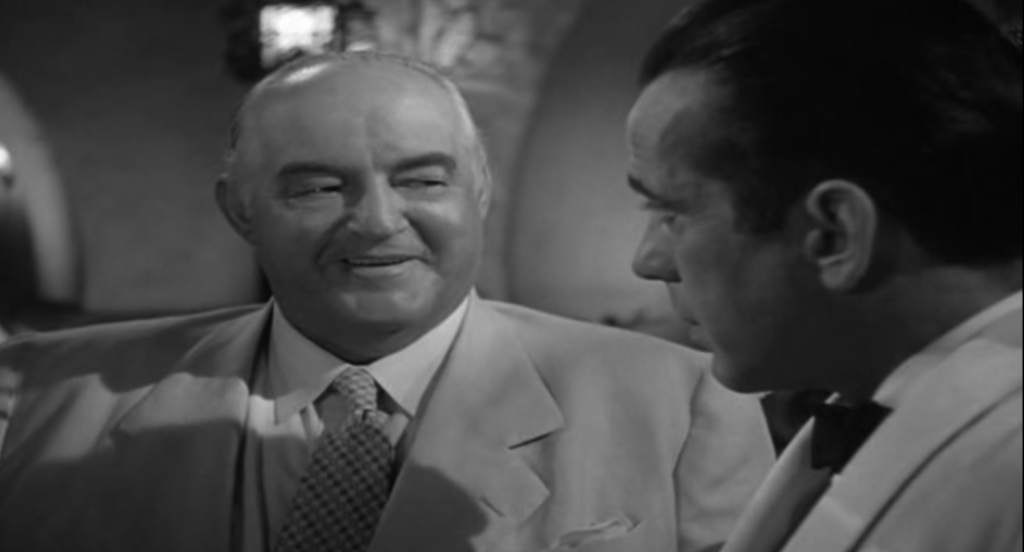
People of Colour
There is only one person of colour within Casablanca, that being Sam, who is portrayed as this stereotypical black blues/jazz musician who would’ve been popular in America during this time period. His relationship with Rick is portrayed as being good, as he says he doesn’t even have time to spend all the money that Rick gives him, but at the same time is rather odd as I think Rick views their relationship as like they’re old buddies, where as I think Sam views they’re relationship as more business like.
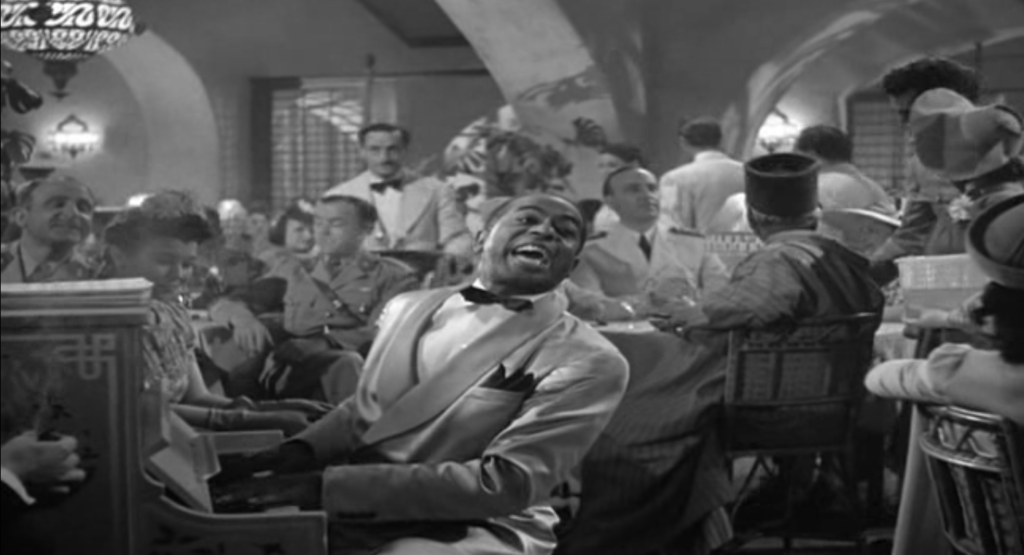
Americans and Europeans
Americans and Europeans are represented in two distinct ways. On one hand you have the highly patriotic representation of characters such as the French citizens of Casablanca and the character of Victor Laszlo, whose intentionally patriotic representation was most likely done to sway the American public out of this Isolationist mindset. And then on the other hand, you have the portrayal of the Nazis, who throughout the film are seen as these borderline maniacal villains, who inhibit the progress of our protagonists actions and goals. This portrayal is to obviously install the belief that the Nazis were extremely evil into the audience watching.
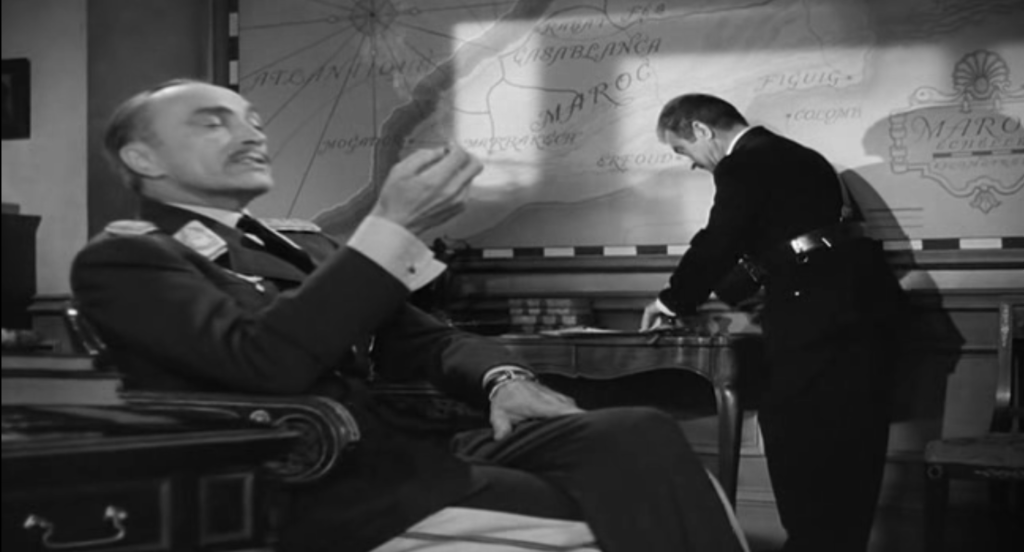
Historical and Political context in Casablanca
Allied Powers – Great Britain, USA, USSR
Axis Powers – Germany, Japan, Italy
France
At the start of WWII, France was on the side of Great Britain. However, France was invaded early in to the war and were then occupied by Germany. A small part of the French population still fought on the Allied side under the title ‘The Free French’. Vichy France is a territory, about half of France, has its own government, who are basically puppets to the Germans. Vichy France is under control of Morocco, and more importantly, Casablanca.
Americans would learn about the war through radio, newspapers and films, which arguably are the most informative because they show whats happening through images and not words.
Pearl Harbour (Dec 7, 1941)
America joined WWII on the 7th of December 1941, as a result of Pearl Harbour, an unprovoked bombing on an American harbour in Hawaii by the Japanese.
Operation Torch (Nov 8, 1942 – Nov 16, 1942)
The film captured the zeitgeist (the defining spirit or mood of a particular period of history as shown by the ideas and beliefs of the time) of American Patriotism at the time of the war, which was a result of Operation Torch, which was when the Americans and the British planted their foothold in Occupied territory in, coincidentally, Morocco, Casablanca (North Africa).
‘Casablanca’ First Screening (Nov 26, 1942)
The first screening of Casablanca took place in New York City, November 26, 1942.
Casablanca Conference (Jan 14, 1943 – Jan 24, 1943)
The Casablanca Conference was a meeting between U.S. President Franklin D. Roosevelt and British Prime Minister Winston Churchill in the city of Casablanca, Morocco that took place from January 14–24, 1943. While Soviet Premier Joseph Stalin received an invitation, he was unable to attend because the Red Army was engaged in a major offensive against the German Army at the time. The most notable developments at the Conference were the finalization of Allied strategic plans against the Axis powers in 1943, and the promulgation of the policy of “unconditional surrender.”
‘Casablanca’ General Release (January 23, 1943)
Casablanca was generally released to the public on January 23rd, 1943 and was extremely well received. It is now considered one of the greatest pieces of American film-making of all time.
Superb notes Dante.
Keep up the good work.